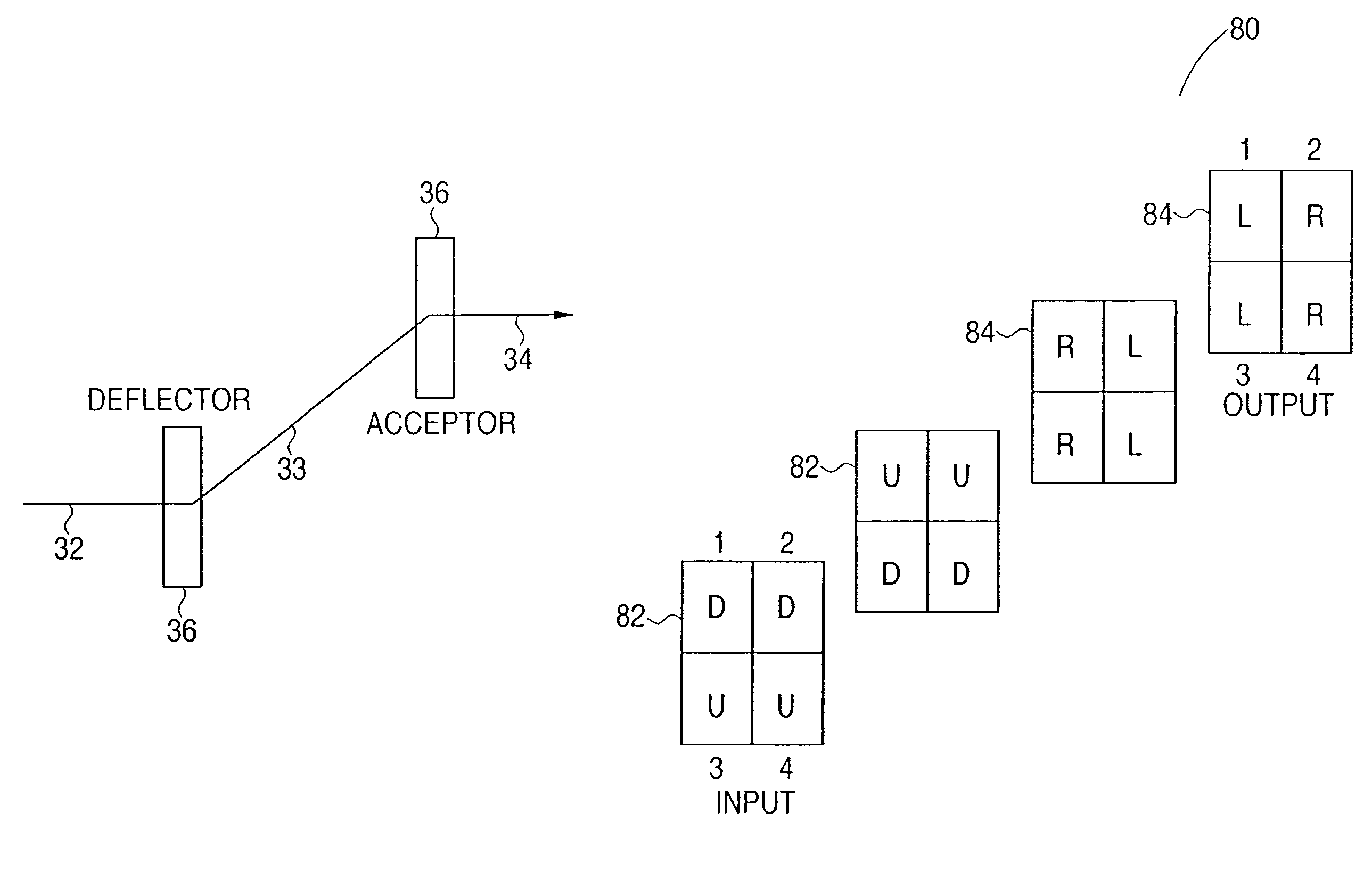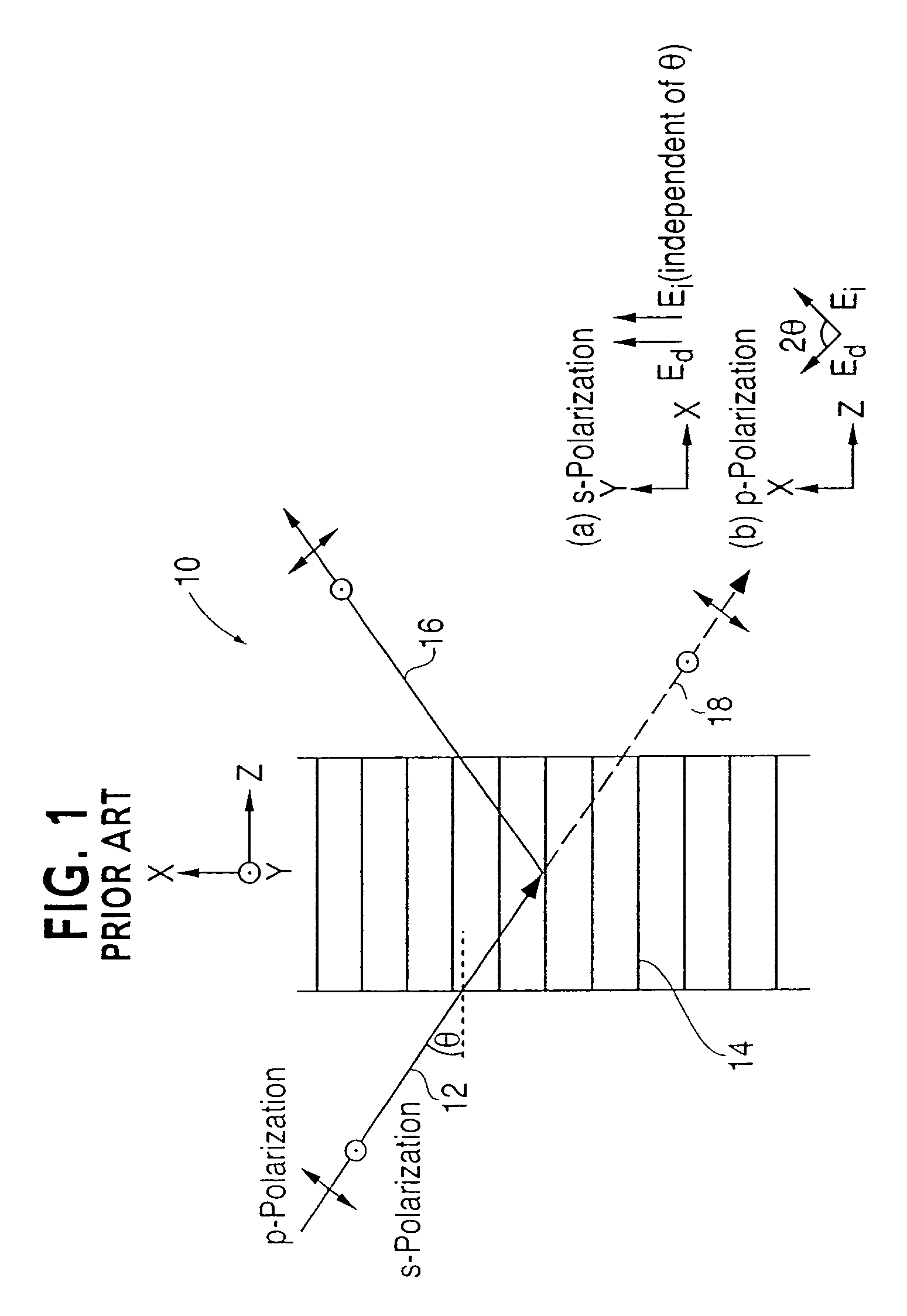Switchable polymer-dispersed liquid crystal optical elements
a liquid crystal and switchable technology, applied in optics, non-linear optics, instruments, etc., can solve the problems of high loss and polarization dependent loss, high cost, and limited speed of opto-mechanical switches,
- Summary
- Abstract
- Description
- Claims
- Application Information
AI Technical Summary
Benefits of technology
Problems solved by technology
Method used
Image
Examples
Embodiment Construction
[0076]A basic component of the optical elements described in detail within this disclosure is the polymer-dispersed liquid crystal (“PDLC”) material used therein. Accordingly, a general description of the ingredients which comprise this PDLC material as well as various specific examples of combinations of these ingredients which are used to form specific types of PDLC materials, are discussed immediately, below.
[0077]In accordance with embodiments of the present invention there is provided a polymer-dispersed liquid crystal (“PDLC”) material made from a monomer, a dispersed liquid crystal, a cross-linking monomer, a coinitiator and a photoinitiator dye. These PDLC materials exhibit clear and orderly separation of the liquid crystal and cured polymer, whereby the PDLC material advantageously provides high quality holographic gratings. The PDLC materials of the present invention are also advantageously formed in a single step. The present invention also utilizes a unique photopolymeri...
PUM
| Property | Measurement | Unit |
|---|---|---|
| thickness | aaaaa | aaaaa |
| thickness | aaaaa | aaaaa |
| wavelengths | aaaaa | aaaaa |
Abstract
Description
Claims
Application Information
 Login to View More
Login to View More - R&D
- Intellectual Property
- Life Sciences
- Materials
- Tech Scout
- Unparalleled Data Quality
- Higher Quality Content
- 60% Fewer Hallucinations
Browse by: Latest US Patents, China's latest patents, Technical Efficacy Thesaurus, Application Domain, Technology Topic, Popular Technical Reports.
© 2025 PatSnap. All rights reserved.Legal|Privacy policy|Modern Slavery Act Transparency Statement|Sitemap|About US| Contact US: help@patsnap.com



